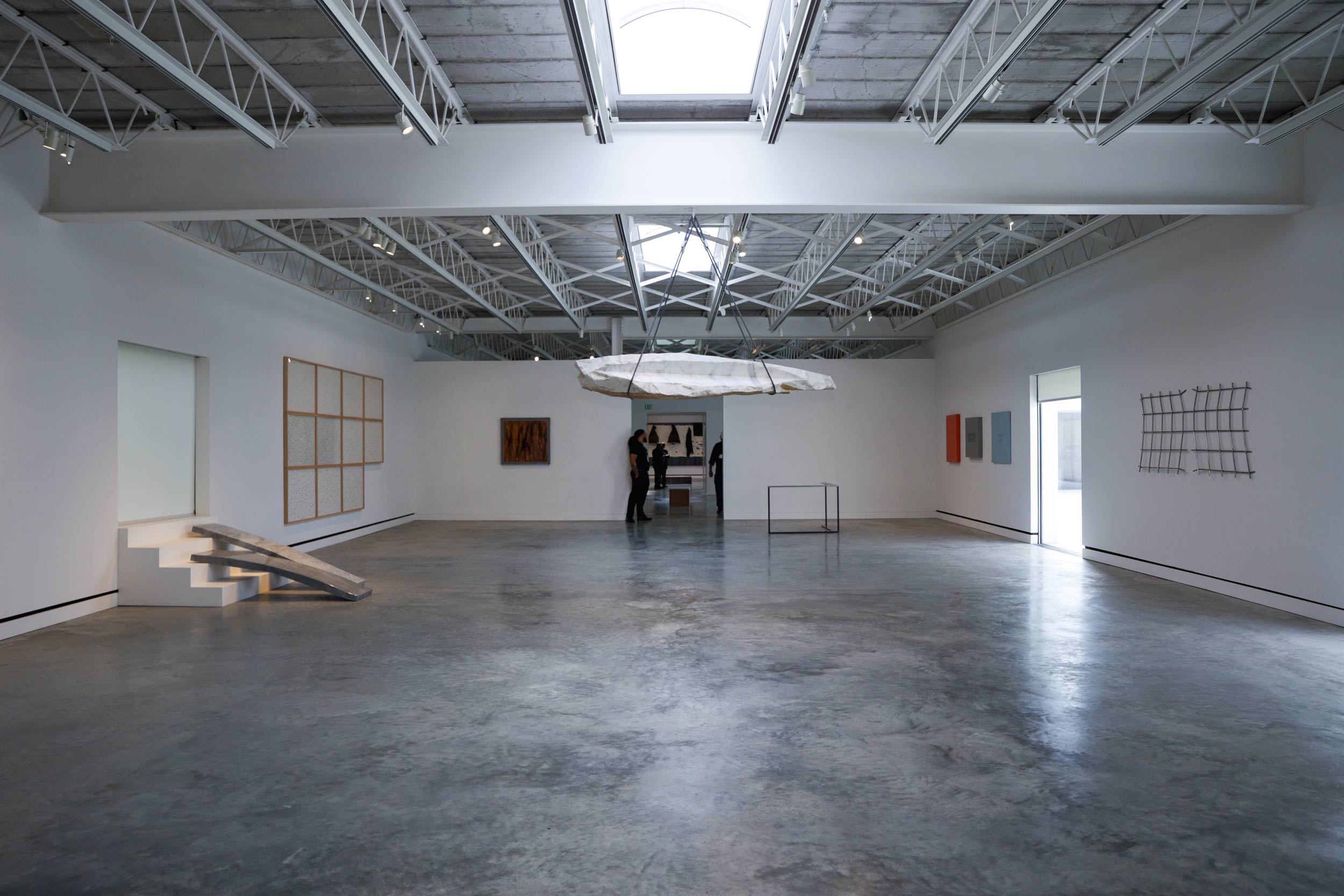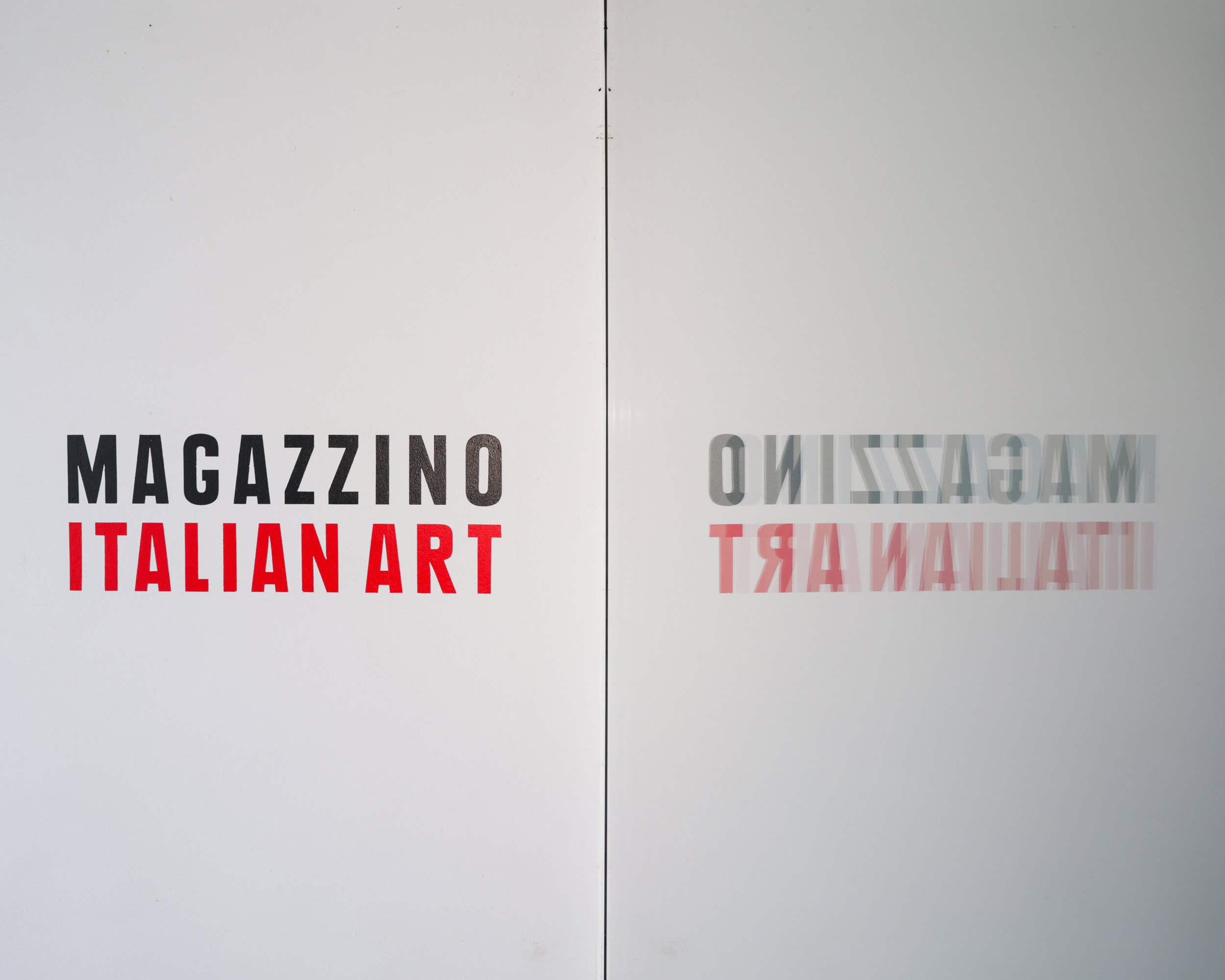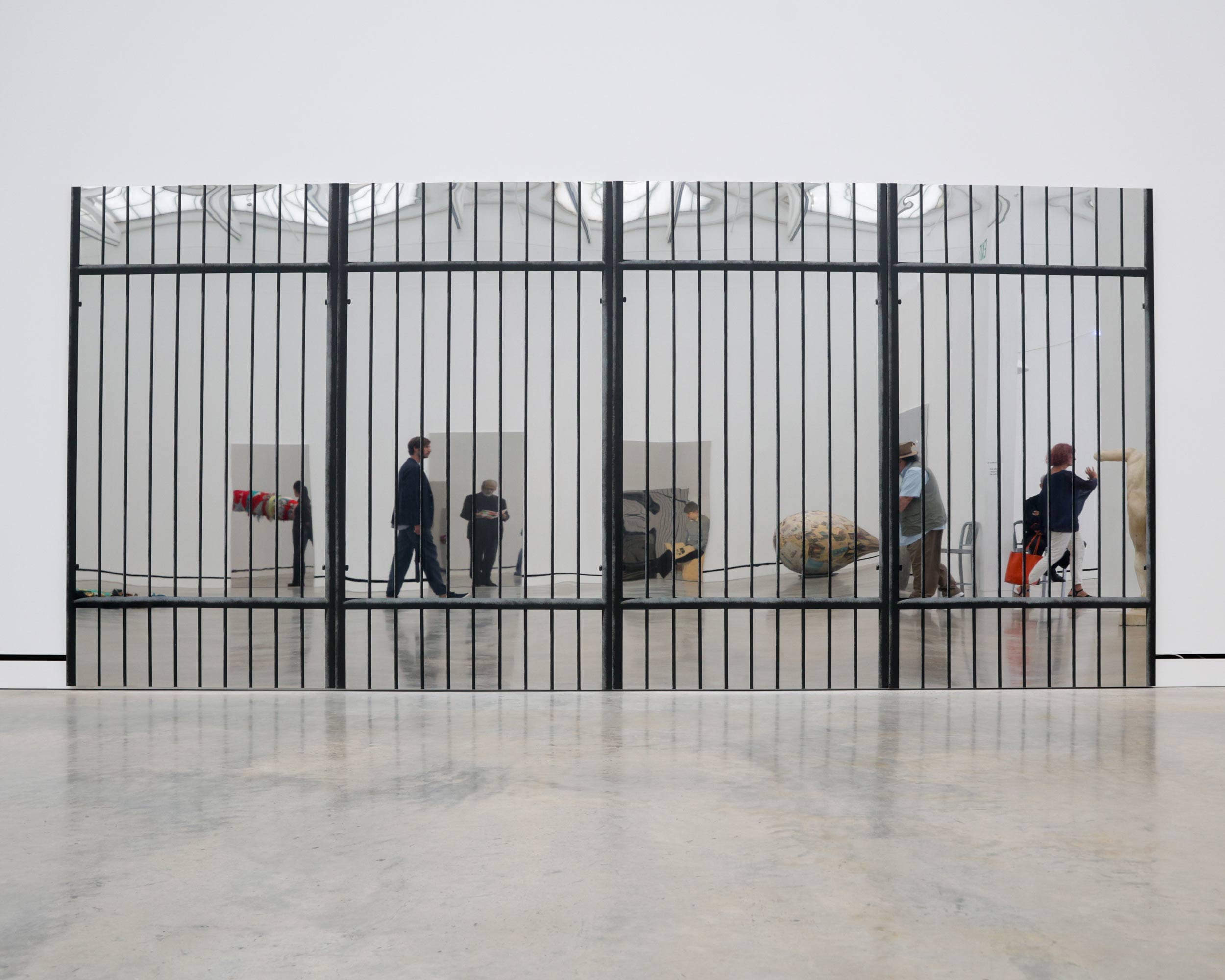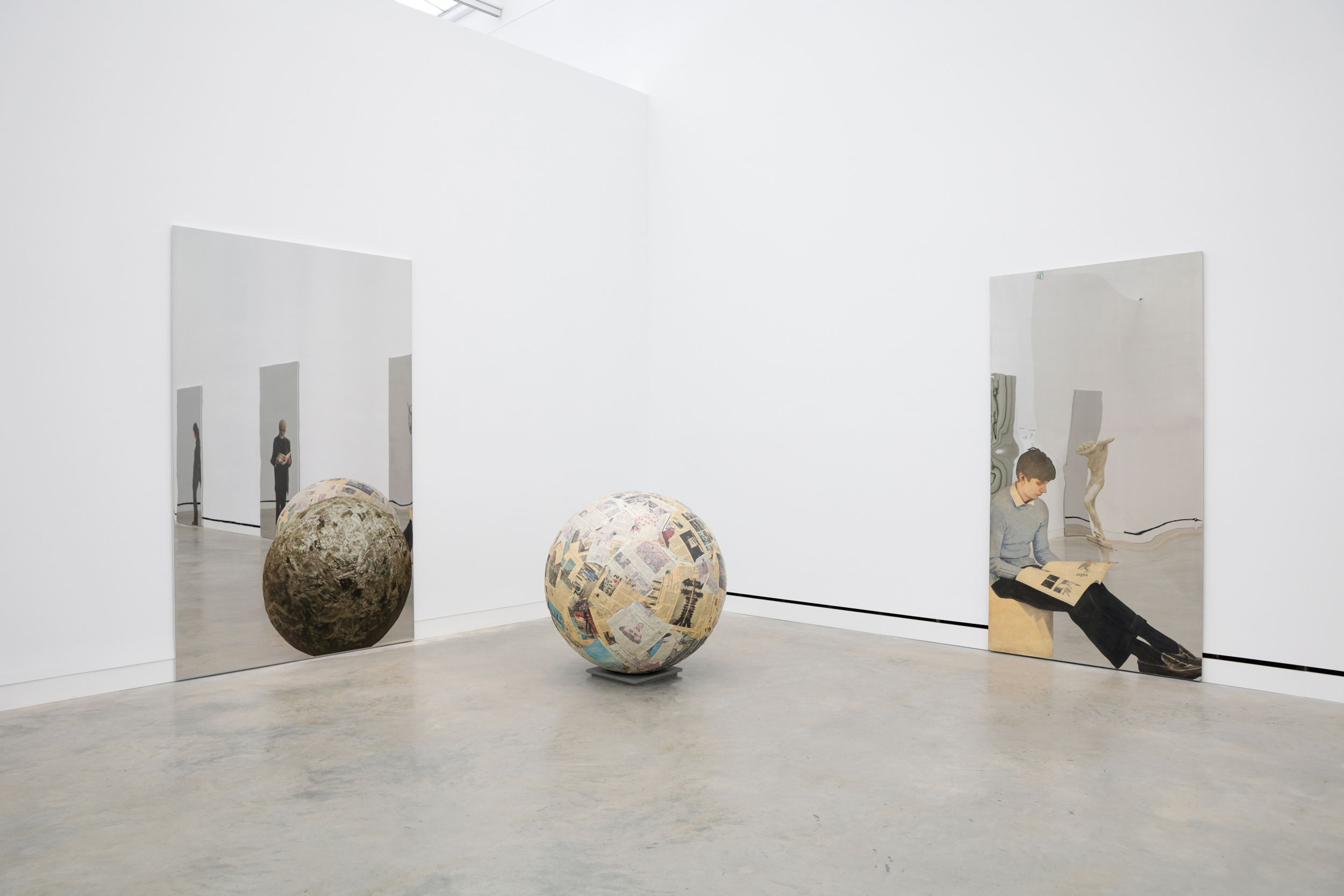Magazzino Italian Art’s new free-standing structure boasts two inaugural exhibitions, marrying the spirit of community with postwar art
“Music is air, architecture is light. There is silence in both, so when the rain falls…” architect Alberto Campo Baeza trails off enigmatically, gesturing around the stark gallery we stand in. Erected in the west wing of Magazzino Italian Art Foundation’s Robert Olnick Pavilion, his perfect cube is painted white on all six of its faces, with windows at each vertex to filter light in. The current weather conditions are not ideal for art viewing, he says; rain-streaked glass and gloomy sky refract across the walls, tinging them a crisp gray.
Right now, the gallery is home to five works by Ettore Spalletti: three large-scale paintings in blush and gray-blue, fabricated with layers upon layers of color, applied ritualistically at the same time of day. Then, there’s a black lacquered flying saucer, wedged in a low corner, and a pale blue column. As the rain picks up, Baeza’s initial statement starts to make sense: Rather than simply looking, you have to listen to this work, in constant conversation with the outside world, diffusing through the windows.
Magazzino, a museum and research center dedicated to advancing postwar and contemporary Italian art in the United States, opened its Robert Olnick Pavilion to the public on September 14, expanding its existing campus in Cold Spring, New York. The freestanding, 13,000-square-foot building is a new addition—a cousin, of sorts, to a larger gallery erected in 2017, entirely dedicated to the Arte Povera movement.
“The sub-level space reflects this idea of everything, fitted with floor-to-ceiling windows, looking towards a cement atrium, thoughtfully sunken into the hillside.”
Across the hall from Spalletti is Mario Schifano: The Rise of the ’60s, focused on the painter’s understanding of how life and art fuse, drawing on the concept of tutto, meaning ‘everything.’ While aesthetically similar to Pop art and neo-Dada, Schifano’s work takes a more maximalist approach to the realm of consumerism, remarkable in its lavish use of color. The gallery is adorned with multimedia works: spray enamel on canvas encased in perspex, oil paint overlaid with plexiglass. The sub-level space reflects this idea of everything, fitted with floor-to-ceiling windows, looking towards a cement atrium, thoughtfully sunken into the hillside.
“The Robert Olnick Pavilion is dedicated to my father, who instilled in me the value of philanthropy,” says Nancy Olnick, who founded Magazzino with her partner Giorgio Spanu. The structures they built serve the Hudson Valley community, from the opportunity to view great art to simply sharing a meal at the new Café Silvia, featuring dishes crafted with locally-sourced ingredients.
The emotion at Magazzino is palpable—“not unlike the excitement [around a] birth,” says Baeza of the pavilion. Here, in Upstate New York, the tradition of Italian art merges with the spirit of community.















